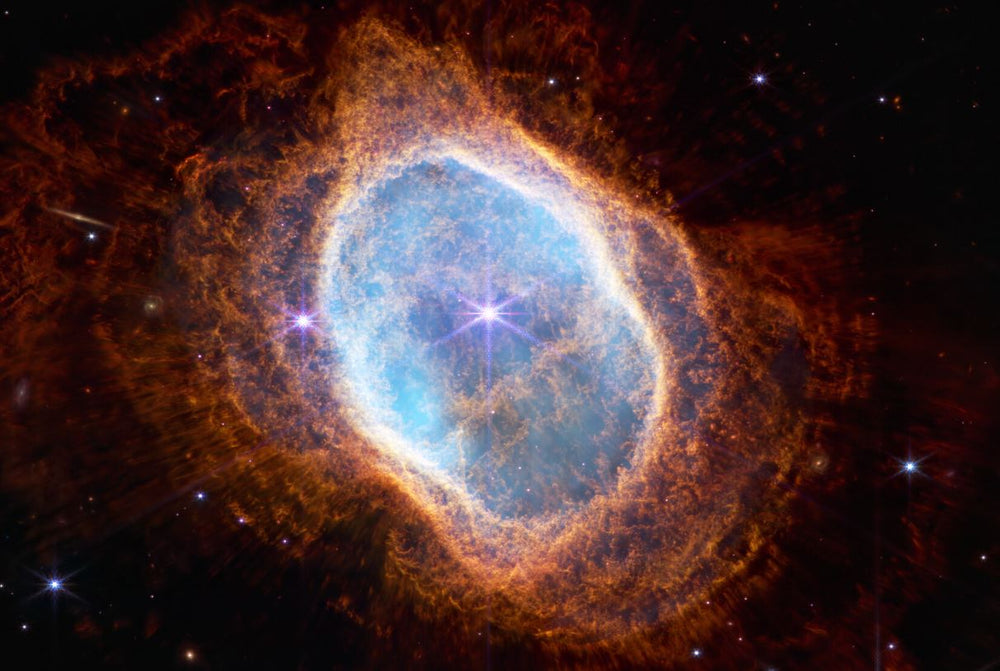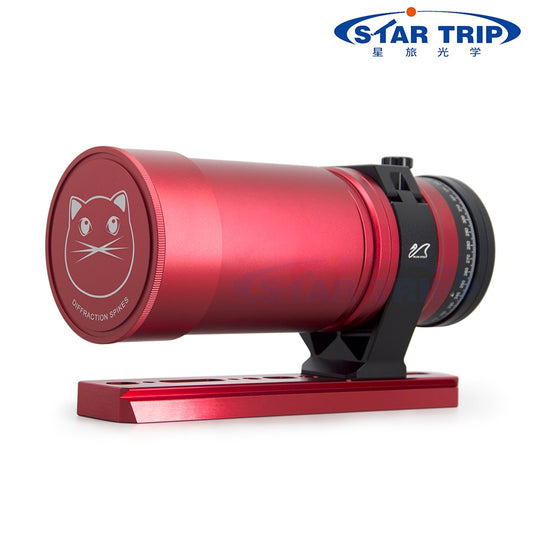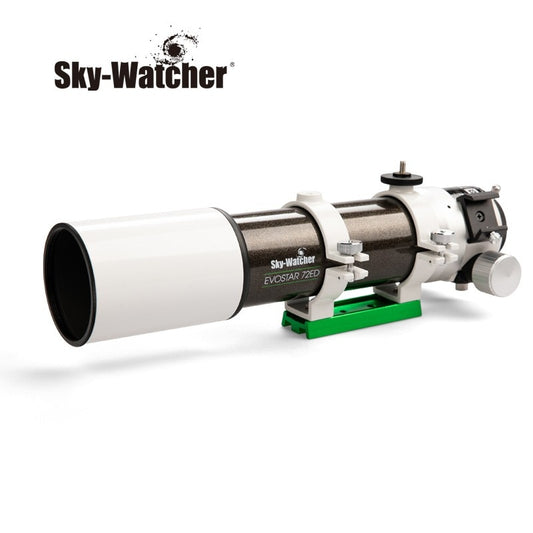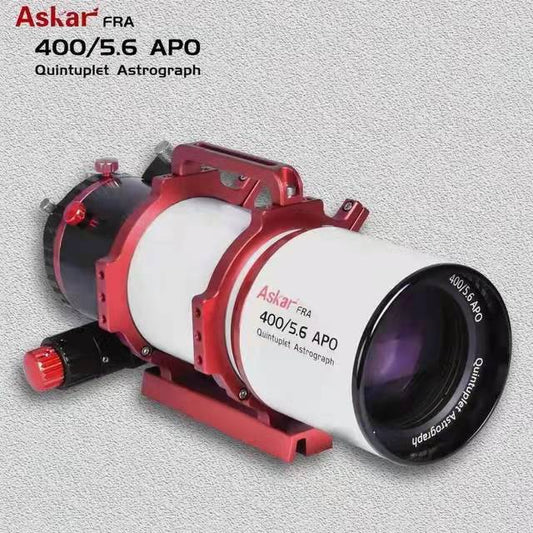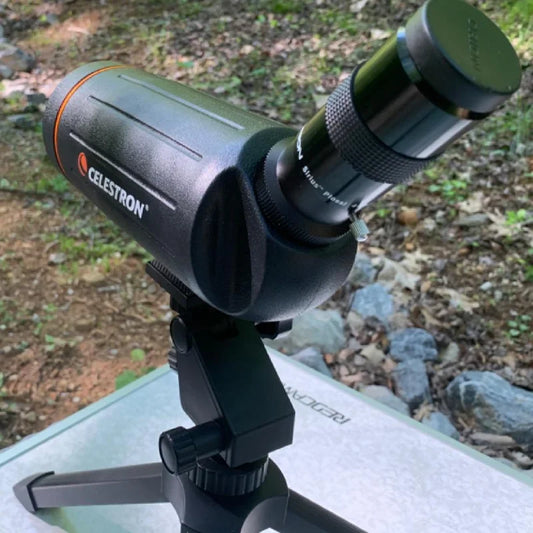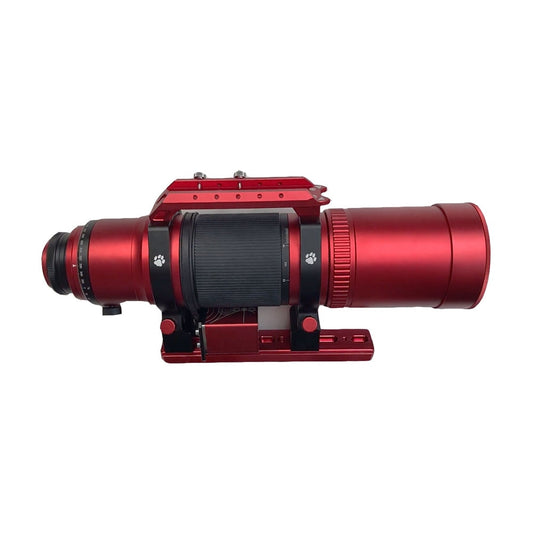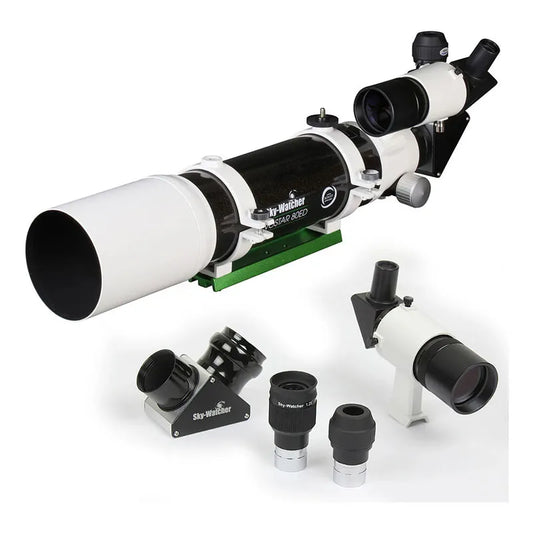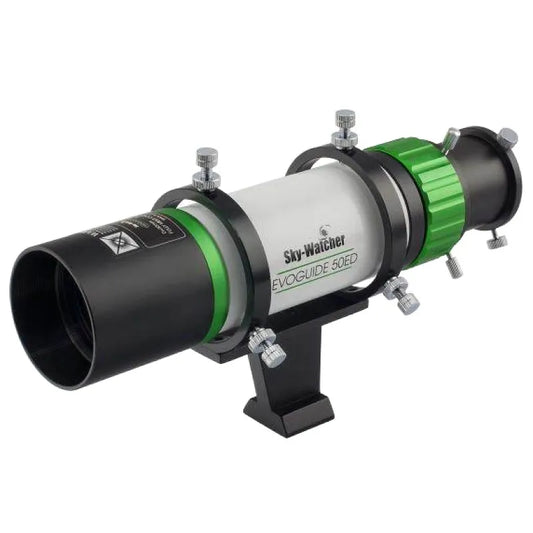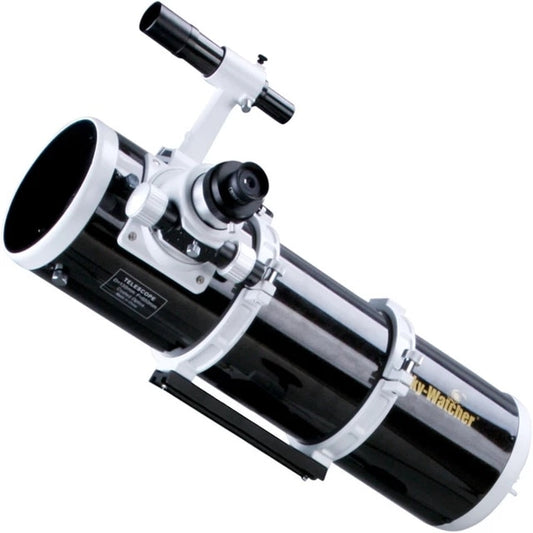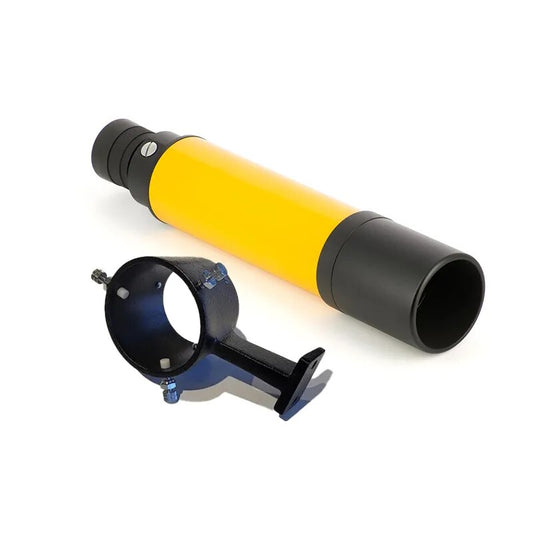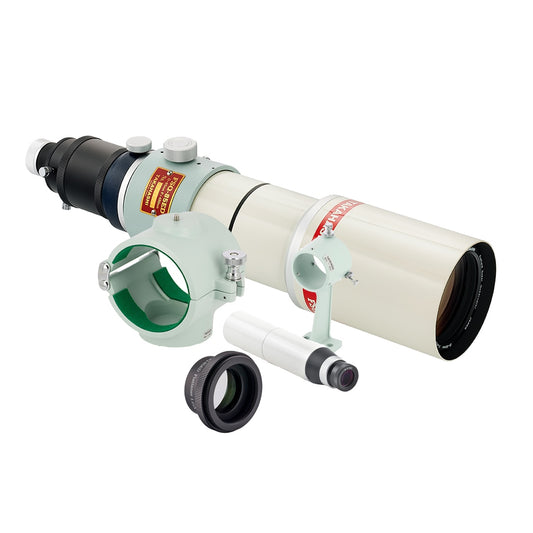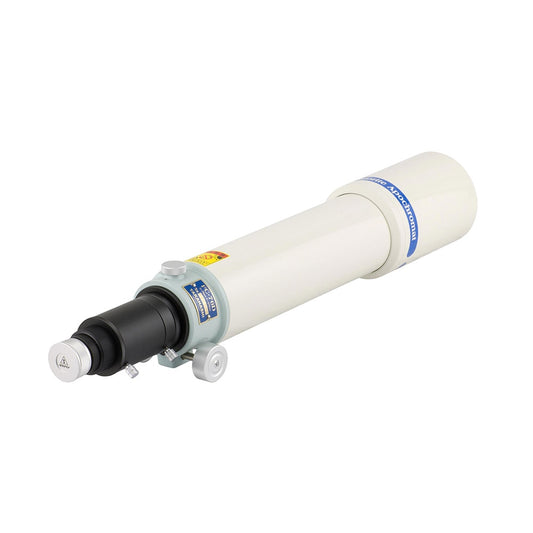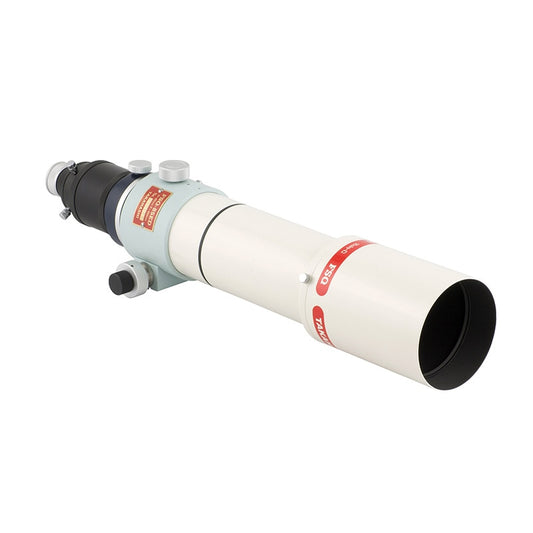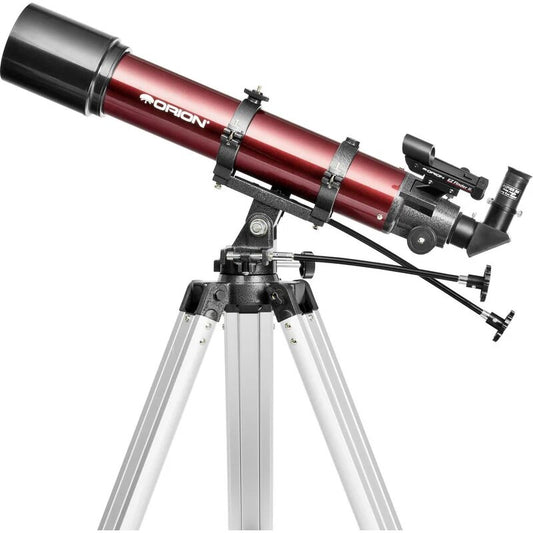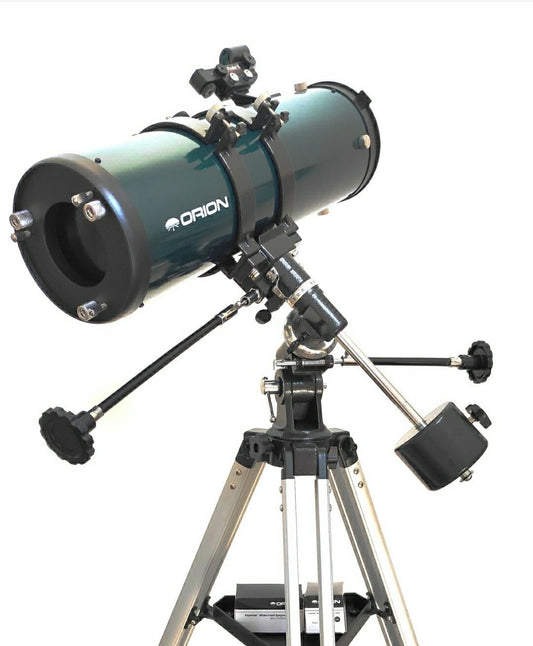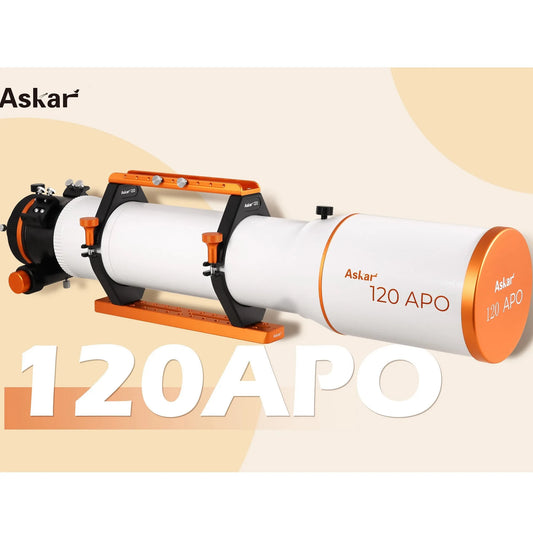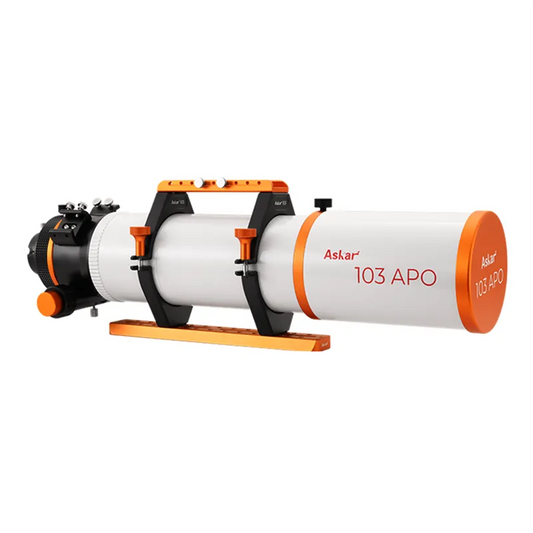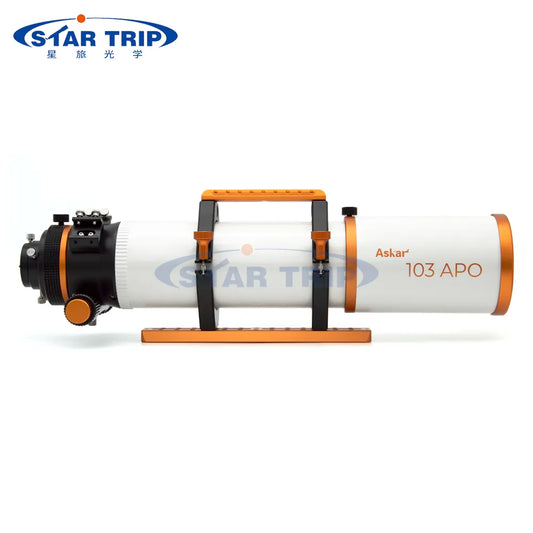Are you interested in exploring the wonders of the universe and seeing the planets and galaxies up close? If so, investing in the best telescope is essential. With so many options on the market, it can be challenging to determine which telescope is the best for observing planets and galaxies. In this blog post, we'll provide an overview of the top telescopes to help you choose the best telescope to see planets and galaxies.

Are you ready to embark on a celestial journey and witness the captivating beauty of planets and galaxies? Choosing the right telescope is paramount for capturing the intricate details of these celestial wonders. In this comprehensive guide, we present ten exceptional telescopes known for their high focal length, ideal for exploring distant galaxies and studying the planets in our solar system. Each telescope comes with detailed specifications, along with a list of pros and cons, to assist you in making an informed decision. So, let's dive into the fascinating world of telescopes and discover the perfect instrument for your astronomical adventures.
Celestron NexStar 8SE
The Celestron NexStar 8SE is a top contender for the best telescope to see planets and galaxies. With its 8-inch aperture and 2032mm focal length, this computerized telescope offers stunning views of celestial objects. Its advanced tracking system ensures precise object tracking, while the compact and portable design makes it suitable for on-the-go observations. Whether you're a beginner or an experienced astronomer, the Celestron NexStar 8SE's excellent optics and versatility make it a fantastic choice for exploring the mysteries of planets and galaxies.
Aperture: 8 inches (203mm)
Focal Length: 80 inches (2032mm)
Focal Ratio: f/10
Weight: 33 lbs (14.97 kg)
Pros:
- Advanced computerized tracking system for precise object tracking
- Compact and portable design, perfect for on-the-go observations
- Excellent optics that provide crisp and clear views
- Suitable for both beginners and experienced astronomers
Cons:
- Requires a power source for motorized functions
- Relatively heavier compared to other options
Skywatcher Esprit 150ED
For astronomers seeking unparalleled color correction and contrast, the Skywatcher Esprit 150ED is a standout choice. With its 6-inch aperture and 1200mm focal length, this telescope delivers exceptional image quality, making it perfect for both visual observation and astrophotography. The sturdy build and smooth dual-speed focuser further enhance the overall experience. While the Skywatcher Esprit 150ED falls into a higher price range and requires a robust mount due to its weight, its remarkable capabilities make it a preferred option for capturing the intricate details of planets and galaxies.
Aperture: 6 inches (150mm)
Focal Length: 47 inches (1200mm)
Focal Ratio: f/8
Weight: 35 lbs (15.88 kg)
Pros:
- Exceptional color correction and high contrast images
- Suitable for astrophotography due to its sturdy build
- Smooth dual-speed focuser for precise focusing
- Ideal for advanced astronomers seeking detailed views
Cons:
- Bulky and requires a sturdy mount due to its weight
- Falls into a higher price range
William Optics GT81
The William Optics GT81 is a compact and lightweight telescope that packs a punch. With its 81mm aperture and 478mm focal length, this versatile instrument offers excellent optics and is ideal for astrophotography. Its portable design makes it easy to transport to your favorite observation sites. While the smaller aperture limits its light-gathering capability, the William Optics GT81's high-quality optics and suitability for both planetary and deep-sky observations make it a remarkable choice for capturing the beauty of planets and galaxies.
Aperture: 3.2 inches (81mm)
Focal Length: 18.8 inches (478mm)
Focal Ratio: f/5.9
Weight: 9.9 lbs (4.49 kg)
Pros:
- Compact and lightweight, perfect for portable observations
- Excellent optics for high-quality images
- Versatile for both planetary and deep-sky observations
- Ideal for astrophotography enthusiasts
Cons:
- Smaller aperture limits light-gathering capability
- May require additional accessories for certain applications
Takahashi FC-100DC
With the Takahashi FC-100DC, you can expect superior optical performance. Boasting a 100mm aperture and 740mm focal length, this telescope offers exceptional color correction and compactness. Its lightweight design makes it highly portable, and its excellent optics ensure remarkable views of planets and galaxies. The Takahashi FC-100DC's robust construction and suitability for both beginners and experienced users make it a reliable choice for astronomy enthusiasts looking to delve into the mysteries of the universe.
Aperture: 3.9 inches (100mm)
Focal Length: 29.1 inches (740mm)
Focal Ratio: f/7.4
Weight: 8.4 lbs (3.81 kg)
Pros:
- Superb optics with outstanding color correction
- Compact and lightweight design for easy transport
- Excellent for planetary and lunar observations
- Suitable for both beginners and experienced users
Cons:
- Falls into a higher price range
- Limited availability in some regions
Sharpstar 15028HNT
If high-resolution views and astrophotography are your goals, the Sharpstar 15028HNT is a telescope worth considering. With its 150mm aperture and 1125mm focal length, this compact instrument delivers impressive image quality. Its compact design and robust build make it an excellent choice for astrophotographers on the go. While the higher price range and additional accessory requirements are factors to consider, the Sharpstar 15028HNT's exceptional optics and versatility make it an outstanding option for observing planets and galaxies with stunning clarity.
Aperture: 5.9 inches (150mm)
Focal Length: 44.3 inches (1125mm)
Focal Ratio: f/7.5
Weight: 15.4 lbs (6.99 kg)
Pros:
- High-resolution views with exceptional optics
- Ideal for astrophotography due to its compact design
- Robust build quality for durability
- Perfect for intermediate and advanced users
Cons:
- Falls into a higher price range
- Additional accessories may be required for certain applications
Celestron CPC 1100
The Celestron CPC 1100 is a powerhouse when it comes to observing planets and galaxies. With its large 11-inch aperture and impressive 2800mm focal length, this telescope excels at capturing light and revealing fine details. Equipped with a computerized GoTo mount, the CPC 1100 ensures precise tracking and easy navigation through the night sky. Although it is on the heavier side, weighing in at 63 lbs (28.58 kg), its sturdy construction guarantees stability during observations. Whether you're a seasoned astronomer or a dedicated beginner, the Celestron CPC 1100 offers exceptional capabilities for exploring the vast reaches of the universe.
Aperture: 11 inches (280mm)
Focal Length: 110 inches (2800mm)
Focal Ratio: f/10
Weight: 63 lbs (28.58 kg)
Pros:
- Large aperture for exceptional light-gathering capability
- Computerized GoTo mount for precise tracking
- Suitable for both planetary and deep-sky observations
- Sturdy construction ensures stability
Cons:
- Bulky and requires a robust mount due to its weight
- Less portable compared to smaller options
Skywatcher Dobsonian 10"
For astronomers seeking a balance between affordability and performance, the Skywatcher Dobsonian 10" is an excellent choice. Featuring a 10-inch aperture and a focal length of 1200mm, this telescope offers impressive light-gathering capability, making it ideal for observing planets and distant galaxies. The sturdy Dobsonian mount ensures smooth and easy maneuverability, while the simple setup makes it beginner-friendly. Although it weighs 74 lbs (33.57 kg), its portability and ease of use compensate for the bulk. With the Skywatcher Dobsonian 10", you can embark on exciting astronomical adventures and explore the wonders of the universe without breaking the bank.
Aperture: 10 inches (254mm)
Focal Length: 47 inches (1200mm)
Focal Ratio: f/4.7
Weight: 74 lbs (33.57 kg)
Pros:
- Large aperture for impressive light grasp
- Simple and easy-to-use Dobsonian mount
- Ideal for both beginners and experienced users
- Suitable for deep-sky observations
Cons:
- Bulky and heavy, requiring a sturdy setup for stability
- Not as portable as smaller telescopes

What magnification telescope to see planets
When it comes to observing the planets, choosing the right magnification is crucial. Too high of a magnification and the image will become blurry and distorted, while too low of a magnification and you won't be able to see the details you want. In this blog post, we'll discuss what magnification telescope to see planets and provide some tips for selecting the best magnification for your needs.
Understanding Magnification
Magnification is a measure of how much larger an object appears through a telescope compared to the naked eye. The magnification of a telescope is determined by the focal length of the telescope divided by the focal length of the eyepiece. For example, a telescope with a focal length of 1000mm and an eyepiece with a focal length of 10mm would have a magnification of 100x (1000mm/10mm).

Ideal Magnification for Planetary Observation
The ideal magnification for observing planets varies depending on the size and brightness of the planet, as well as the atmospheric conditions at the time of observation. As a general rule, a magnification of around 50x to 75x per inch of aperture is a good starting point for planetary observation.
For example, if you have a 4-inch telescope, you should aim for a magnification between 200x and 300x for the best view of planets like Jupiter and Saturn. However, keep in mind that atmospheric conditions can affect the clarity of the image, so it's best to experiment with different magnifications to find the sweet spot for your specific observation conditions.

Tips for Selecting the Right Magnification
When selecting the right magnification for planetary observation, consider the following tips:
- Start with a low magnification: Start with a low magnification and gradually increase it until you find the sweet spot for the current atmospheric conditions.
- Choose a quality eyepiece: Investing in a quality eyepiece can significantly improve the quality of the image at higher magnifications.
- Consider the atmospheric conditions: Atmospheric conditions can affect the clarity of the image, so adjust the magnification accordingly.
- Avoid extreme magnifications: Avoid using extreme magnifications as they can result in a blurry and distorted image.
When it comes to observing planets, selecting the right magnification is essential. As a general rule, aim for a magnification of around 50x to 75x per inch of aperture for the best view. Remember to start with a low magnification, invest in a quality eyepiece, consider the atmospheric conditions, and avoid extreme magnifications. With these tips, you can find the best magnification telescope to see planets and enjoy the beauty of the cosmos.

What size telescope to see planets
If you're looking to observe planets through a telescope, one of the most important considerations is the size of the telescope. In this blog post, we'll explore what size telescope is needed to see planets clearly and provide some tips for selecting the right size for your needs.
Understanding Telescope Aperture
The size of a telescope is often measured by its aperture, which refers to the diameter of the primary lens or mirror. The larger the aperture, the more light the telescope can collect, which results in brighter and clearer images. This is especially important when observing faint celestial objects like distant galaxies or nebulae.

Ideal Telescope Size for Planetary Observation
When it comes to observing planets, aperture is still important, but not as critical as it is for deep-sky observation. A good starting point for observing planets is a telescope with an aperture of at least 70mm (2.8 inches). This size telescope can provide clear views of the moon and planets like Venus, Mars, Jupiter, and Saturn.
For more detailed observations, especially of features like planetary rings and cloud bands on Jupiter, a larger aperture telescope of at least 100mm (4 inches) is recommended. With a telescope of this size, you can also see some of the smaller moons of Jupiter and the Cassini division in Saturn's rings.
Tips for Selecting the Right Telescope Size
When selecting the right telescope size for planetary observation, consider the following tips:
- Determine your observing goals: What do you want to see through your telescope? Knowing your observing goals can help you determine the appropriate size telescope for your needs.
- Consider portability: Larger telescopes are often more difficult to transport and set up, so consider a smaller telescope if you plan to observe from multiple locations.
- Choose quality optics: Investing in a telescope with quality optics will help you get the best views of planets and other celestial objects.
- Budget: Larger telescopes can be more expensive, so consider your budget when selecting the appropriate size for your needs.
The size of the telescope plays a crucial role in planetary observation. As a general rule, a telescope with an aperture of at least 70mm is recommended for observing the moon and planets. For more detailed observations, a larger aperture telescope of at least 100mm is recommended. When selecting the right telescope size, consider your observing goals, portability, optics quality, and budget. By following these tips, you can find the right size telescope to see planets and explore the beauty of the cosmos.

Online telescope to see planets
With the increasing availability of online resources and technology, it is now possible to explore the universe from the comfort of your own home. We'll explore the best online telescopes to see planets and provide some tips for making the most of these powerful tools.
Benefits of Online Telescopes
One of the biggest benefits of online telescopes is accessibility. With just an internet connection and a computer, anyone can access these powerful telescopes and explore the wonders of the universe. Online telescopes are also very convenient for those who live in light-polluted areas or for those who don't have access to a telescope of their own.
Best Online Telescopes for Planet Observation
There are several online telescopes that are well-suited for observing planets:
- Slooh: Slooh is a popular online telescope platform that offers live views of the night sky. Slooh has several telescopes available for use, including a robotic telescope that is ideal for observing planets. Slooh also provides commentary and insights from astronomy experts, making it a great educational tool.
- Virtual Telescope Project: The Virtual Telescope Project offers high-quality images of planets and other celestial objects. The project is run by a team of professional astronomers and astrophysicists, and they offer both live and archived images.
- Las Cumbres Observatory: The Las Cumbres Observatory offers a network of telescopes that can be controlled remotely from anywhere in the world. This platform is great for those who want to observe planets and other celestial objects in real-time.

Tips for Using Online Telescopes
When using online telescopes to observe planets, it's important to keep the following tips in mind:
- Understand the limitations: Online telescopes are not as powerful as high-end telescopes, so don't expect to see the same level of detail as you would through a physical telescope.
- Use a high-speed internet connection: To get the best images and avoid lag or buffering, use a high-speed internet connection.
- Plan your observation time: Make sure to check the weather and planetary alignment before starting your observation session.
- Take advantage of educational resources: Many online telescope platforms offer educational resources and insights from astronomy experts, so take advantage of these tools to deepen your understanding of the universe.
Online telescopes offer a convenient and accessible way to explore the universe and observe planets. Slooh, the Virtual Telescope Project, and the Las Cumbres Observatory are among the best online telescope platforms for observing planets. When using online telescopes, it's important to understand their limitations, use a high-speed internet connection, plan your observation time, and take advantage of educational resources. By following these tips, you can make the most of these powerful tools and deepen your appreciation for the beauty of the cosmos.

Conclusion
In conclusion, finding the best telescope to observe planets and galaxies is a thrilling endeavor for stargazing enthusiasts. With our comprehensive list featuring renowned brands such as Celestron, Skywatcher, William Optics, Takahashi, and Sharpstar, you can now make an informed choice based on your specific needs and preferences.
From the advanced capabilities of the Celestron NexStar 8SE to the exceptional color correction of the Skywatcher Esprit 150ED, each telescope offers unique features and specifications tailored to enhance your astronomical experiences. Whether you prioritize portability, astrophotography capabilities, or a combination of both, our list covers a wide range of options to suit different skill levels and budgets.
Remember to consider important factors such as aperture, focal length, focal ratio, and weight. A higher focal length is crucial for observing distant galaxies and the intricate details of planets, while weight plays a role in stability and portability, especially for astrophotography enthusiasts seeking longer exposure times.
Now, armed with this knowledge, you can embark on your celestial journey and delve into the mysteries of the universe. Capture breathtaking views of planets, marvel at the beauty of distant galaxies, and uncover the wonders of our cosmos with the best telescopes available.
Ultimately, the best telescope to see planets and galaxies will depend on your individual needs and preferences. It's important to consider factors such as aperture, magnification, and portability when making your decision. Additionally, don't forget to invest in quality accessories such as eyepieces, filters, and a sturdy mount.
No matter which telescope you choose, observing planets and galaxies can be a truly awe-inspiring experience. Whether you're just starting out or you're an experienced stargazer, exploring the wonders of the universe is a rewarding and exciting endeavor. So, grab your telescope and get ready to be amazed by the beauty of the cosmos!
Telescope Topics:
- Who Invented The Telescope?
- Why are Telescopes Important?
- When was The Telescope Invented?
- Why are Refractor Telescopes Popular?
- Best Deep Sky Objects by Month
- Best Telescope for Viewing Planets and Galaxies
- Best Telescope Eyepiece for Viewing Planets
- Reflector Vs Refractor Telescope
- William Optics Redcat 51
- Takahashi Telescopes
- Brightest Objects in the Night Sky
- What Does a Focal Reducer Do on a Telescope
- Ax Telescope Mount
- Types of Telescopes
- Telescope Mounts Explained
- What is a Catadioptric Telescope
- Telescope Aperture
- How Does a Telescope Work
- Are There Telescopes for Smartphone Camera
- How Much Does a Telescope Cost
- Best Telescopes Under $1000
- What Makes a Good Telescope
- What Does a Focal Reducer Do
- Stellarium
- Bahtinov Mask
- Qhyccd Polemaster Review

